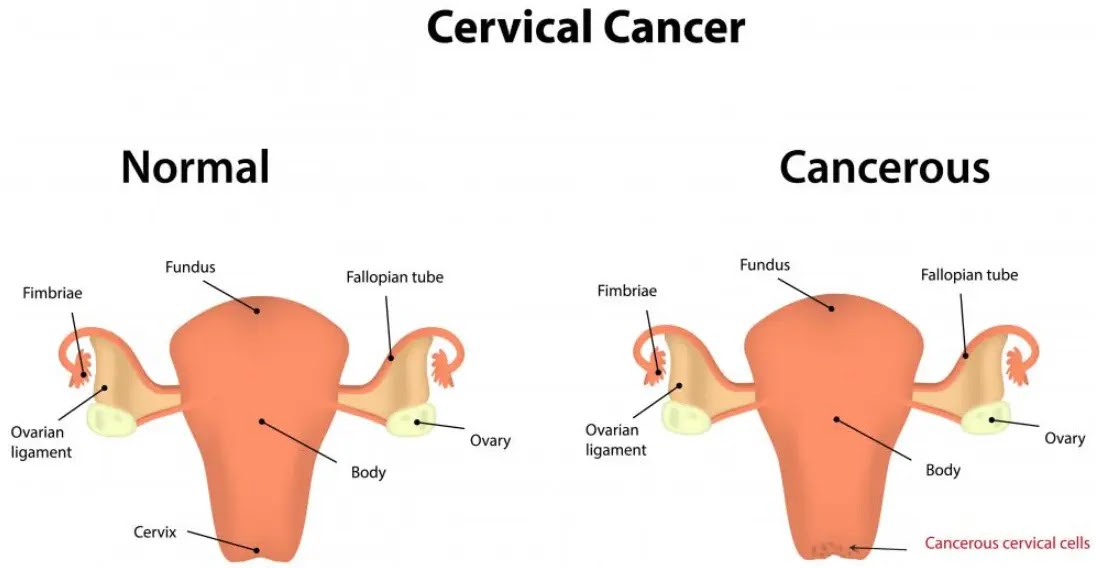When it comes to the life expectancy of stage 4 cervical cancer patients, survival rates and statistics can be a significant concern. However, it's essential to remember that each individual's case is unique, and numerous factors influence their prognosis. In this article, we will explore the survival statistics for different stages of cervical cancer, with a specific focus on stage 4, and delve into the key determinants that impact life expectancy. It's crucial to keep in mind that these figures are informative insights based on past data and not definitive predictions for individual cases.
Survival Rates of Cervical Cancer by Stage
In England, data on cervical cancer survival rates for each stage, covering the years 2013 to 2017, is available. It is important to note that these statistics do not factor in the age of the patients, and outcomes may vary on an individual basis.
Stage 1. Stage 1 cervical cancer exhibits an impressive survival rate, with around 95 out of 100 people (about 95%) surviving for five years or more after diagnosis. The relatively higher survival rate in this stage is attributed to the early detection of cancer when it remains localized within the cervix. Timely diagnosis allows for more successful treatment options and a generally positive prognosis for patients.
Stage 2. For individuals diagnosed with stage 2 cervical cancer, the five-year survival rate is nearly 70 out of 100 people (almost 70%). At this stage, cancer may have started to spread beyond the cervix but is still confined to the pelvic region. Early intervention and appropriate treatment play a crucial role in improving outcomes and extending life expectancy.
Stage 3. Stage 3 cervical cancer shows a survival rate of more than 40 out of 100 people (over 40%) for five years or more after diagnosis. At this advanced stage, the cancer may have spread to the lower part of the vagina or nearby lymph nodes. Despite the challenges posed by stage 3, a significant percentage of patients can achieve long-term survival through comprehensive treatment plans, which often include radiation therapy and chemotherapy.
Stage 4. Stage 4 cervical cancer, the most advanced stage, presents a survival rate of around 15 out of 100 people (roughly 15%) for five years or more after diagnosis. At this stage, cancer has metastasized to distant organs, such as the lungs, liver, or bones. While the survival rate is relatively lower, advancements in medical treatments and palliative care have helped improve the quality of life for stage 4 cervical cancer patients and extend their survival.
These statistics underscore the importance of early detection and prompt intervention in enhancing the chances of survival for cervical cancer patients.
Factors Affecting Survival
Several factors influence the life expectancy of individuals diagnosed with stage 4 cervical cancer. One of the primary determinants is the stage at which the cancer is diagnosed. The size of the tumor and whether it has spread to other parts of the body significantly impact the prognosis. Additionally, the specific type of cervical cancer, such as adenocarcinoma or squamous cell carcinoma, can also affect the likelihood of survival. Understanding the cancer's characteristics is crucial in devising an effective treatment approach. Also, read Benign Meningioma Life Expectancy
Age and overall health are also critical factors. Younger patients and those in good health before diagnosis often have better chances of coping with the challenges of treatment and recovery.
It is essential to recognize that survival rates are not synonymous with life expectancy. Five-year survival rates are commonly used to measure outcomes; however, many individuals live well beyond this period, and their journeys can vary considerably.
Long-Term Outlook
While general survival rates offer valuable insights, they cannot predict the outcome for any individual case. Each patient's situation is unique, and consulting with healthcare professionals is essential to gain personalized insights into the prognosis. Several aspects, such as overall health, access to medical care, and response to treatment, all play a significant role in shaping life expectancy.
Living with stage 4 cervical cancer may require a combination of treatments, including chemotherapy, radiation therapy, and targeted therapies. Palliative care can also be an integral part of the patient's journey, focusing on pain management, symptom relief, and emotional support.
In conclusion, understanding the life expectancy of stage 4 cervical cancer involves considering various factors and statistics. While the survival rates for this stage may seem discouraging, it is crucial to remember that these numbers are not definitive predictions for individual cases. Early detection, appropriate treatment, and a positive mindset can make a significant difference in a patient's journey.
As we navigate through the uncertainties of a cervical cancer diagnosis, staying informed and seeking support from healthcare professionals is paramount. Cherishing every moment with loved ones and maintaining hope is essential in the fight against cervical cancer. Thank you for being part of this journey and providing unwavering support.


